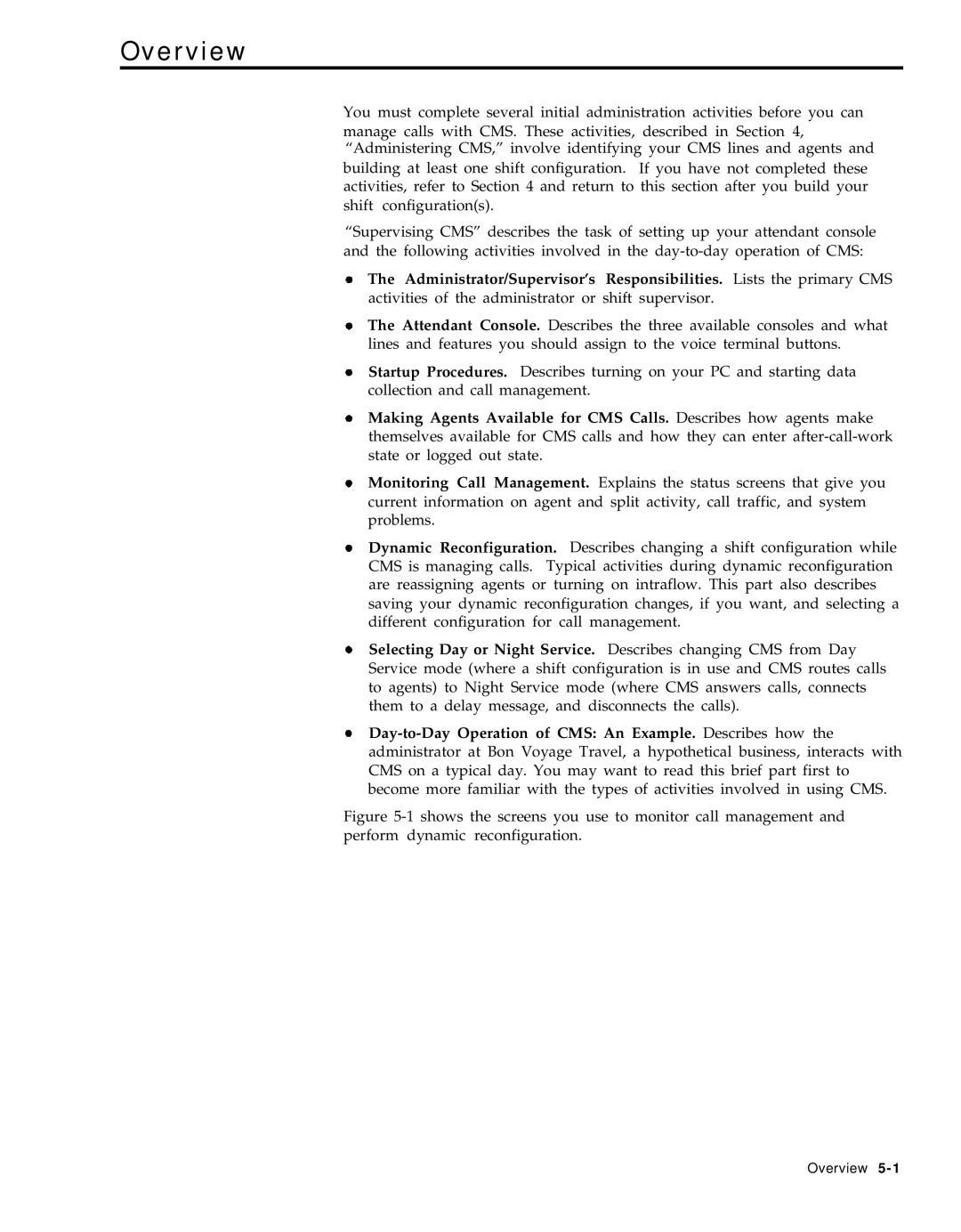
Overview
You must complete several initial administration activities before you can manage calls with CMS. These activities, described in Section 4, “Administering CMS,” involve identifying your CMS lines and agents and building at least one shift configuration. If you have not completed these activities, refer to Section 4 and return to this section after you build your shift configuration(s).
“Supervising CMS” describes the task of setting up your attendant console and the following activities involved in the
The Administrator/Supervisor’s Responsibilities. Lists the primary CMS activities of the administrator or shift supervisor.
The Attendant Console. Describes the three available consoles and what lines and features you should assign to the voice terminal buttons.
Startup Procedures. Describes turning on your PC and starting data
collection and call management.
Making Agents Available for CMS Calls. Describes how agents make themselves available for CMS calls and how they can enter
Monitoring Call Management. Explains the status screens that give you current information on agent and split activity, call traffic, and system problems.
Dynamic Reconfiguration. Describes changing a shift configuration while CMS is managing calls. Typical activities during dynamic reconfiguration are reassigning agents or turning on intraflow. This part also describes saving your dynamic reconfiguration changes, if you want, and selecting a different configuration for call management.
Selecting Day or Night Service. Describes changing CMS from Day Service mode (where a shift configuration is in use and CMS routes calls to agents) to Night Service mode (where CMS answers calls, connects them to a delay message, and disconnects the calls).
Figure 5-1 shows the screens you use to monitor call management and perform dynamic reconfiguration.
Overview
